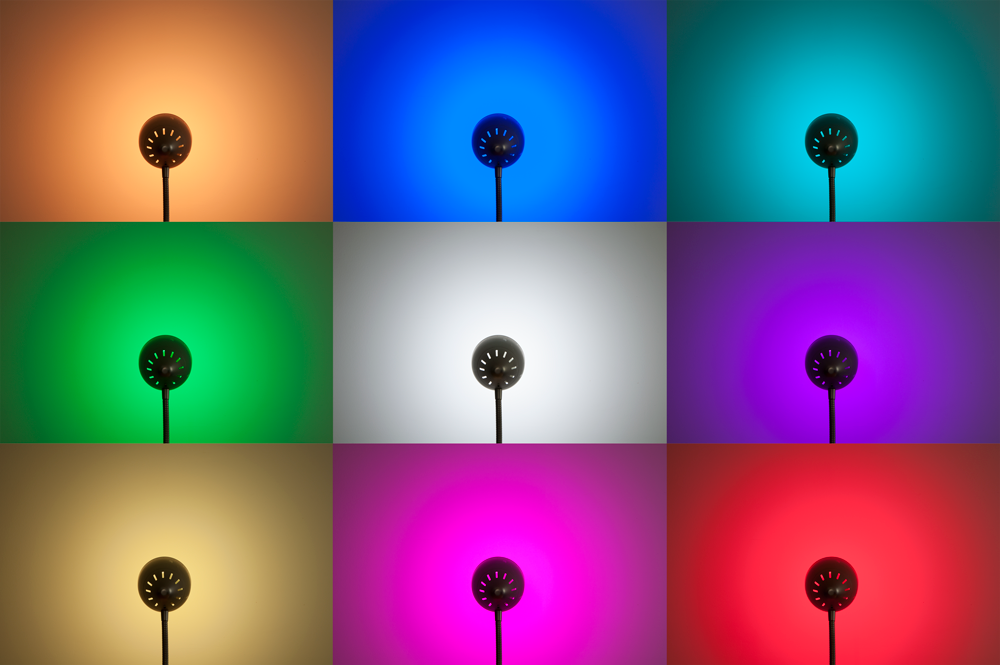
One of the earliest Kickstarter campaigns I supported was LIFX, which they called “The Light Bulb Reinvented”. It seemingly had everything I was looking for. The campaign raised over $1.3M by the time it finished funding in November ‘12. It was an LED light that could change colors via controls from a smartphone. It promised to work over WiFi rather than Zigbee or Z-Wave or something else, so it would not need a special hub. I looked forward to being able to change the color of the light in my office to suit my mood. (Lots of red, of course!) And, the whole crowdfunded aspect of it sounded really cool. After all, who doesn’t want to be in on something early?
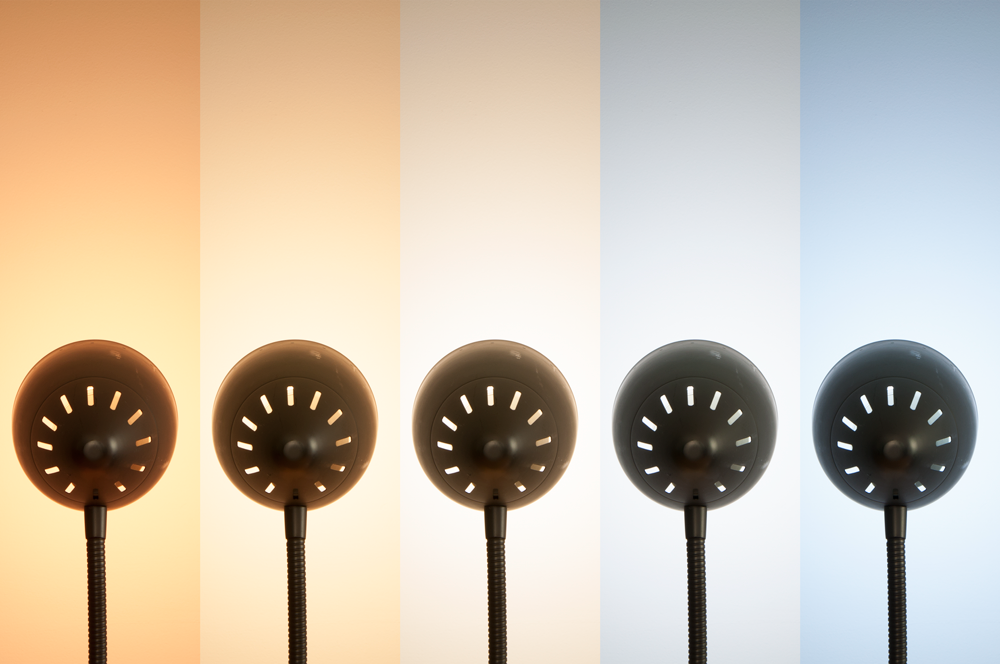
Then, the delivery date slipped. The bulbs were originally supposed to ship in March ’13, but the months dragged on. (See my take on the painful anticipation of such Kickstarter and Indiegogo campaigns.) I broke down and bought the Hue, but it had flaws which left me still looking forward to the LIFX. They finally shipped the bulbs and I received mine in January ‘14.
Unfortunately, though the hardware had finally arrived, the firmware still had some issues. I could not get the bulbs to work in my office. It turns out that the firmware in the bulbs only supported a netmask of 255.255.255.0. While that is the default netmask for most home WiFi routers, it is something that is often changed in non-home environments that need to support more than 250 (or so) devices. My office uses a different netmask, so I was out of luck until a firmware update fixed the problem.
LIFX finally provided the promised firmware update (1.3) on June 29, 2014. Updating the firmware required a WiFi connection and a PC (or Mac) and took over half an hour for a single bulb. However, once I did that, it worked in my office. I guess I should be glad that it did not work previously, because hackers found a way to get into a WiFi network using a security flaw in the LIFX bulbs. That flaw was also fixed in the version 1.3 firmware update.
At home, I’ve been able to use my LIFX bulbs successfully since I first received them. But, I have run into a few issues that give me some pause. First, I noticed that the base of bulb was warm even when the light was off. To see what was going on, I plugged a light fixture and the LIFX bulb into my Belkin WeMo Insight Switch. It is similar to the regular WeMo Switch I review a couple years ago, but with the added feature that it measures electricity usage. When the LIFX bulb was on, it drew about 17 watts. When the light was off, it drew 3 watts. While 3 watts is not a lot, my quick math tells me that the LIFX bulb, when off, would still use almost as much electricity in one day as a traditional 75W bulb does while on for an hour.
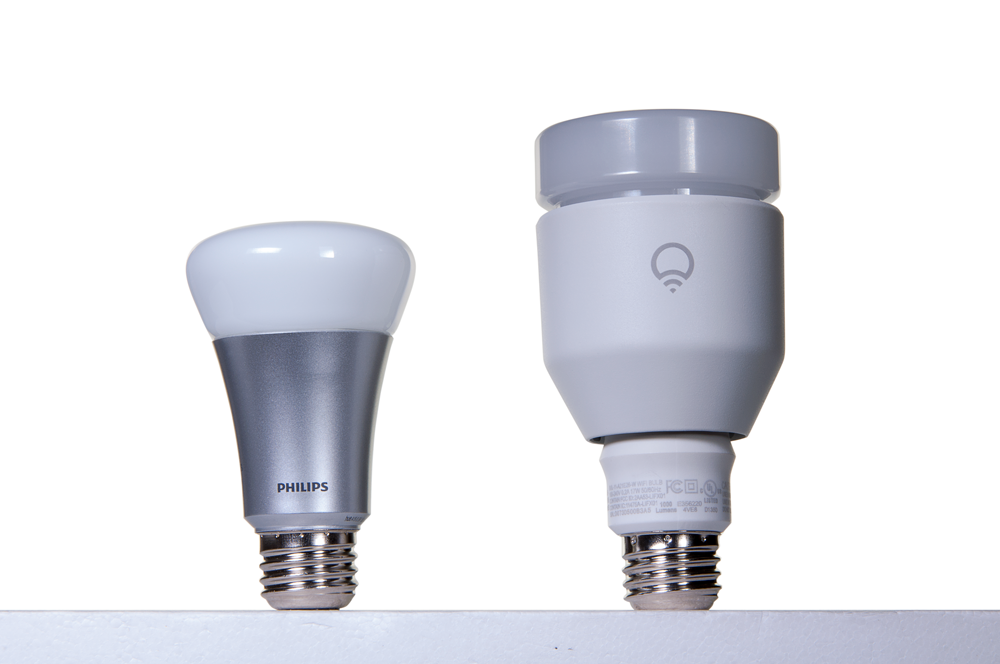
I tried this with a Hue light – it was cool to the touch after an hour and drew “<2” watts (the lowest reading the WeMo Insight Switch gives) while off. (I realize that the WeMo Insight Switch may not be the most accurate way to measure the power usage, but I enjoyed the excuse to play with it!) The LIFX bulb itself is also noticeably larger and heavier than the Hue bulb. The LIFX weighs 10.2 ounces while the Hue only weighs 4.6 ounces.
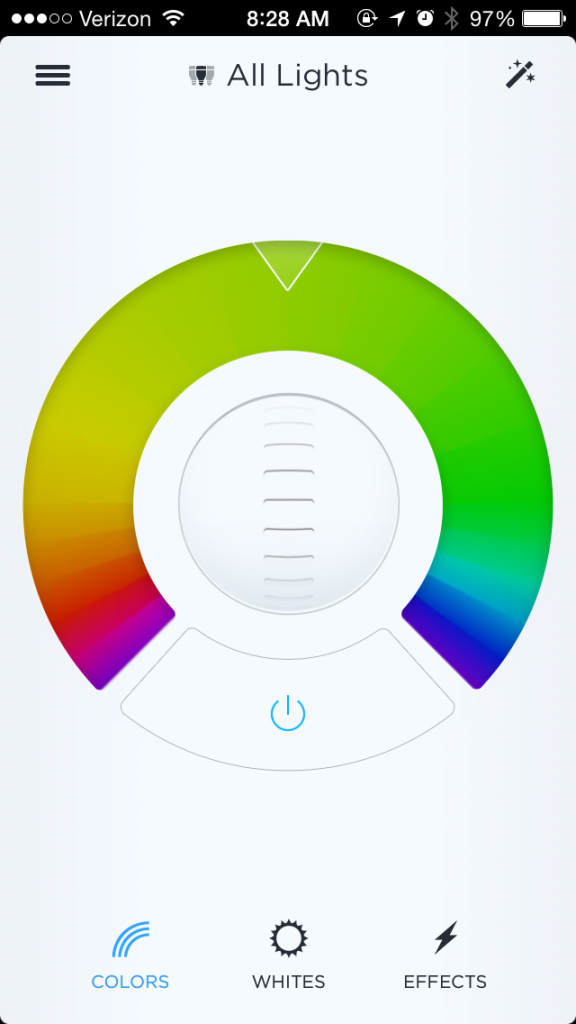
Secondly, the LIFX smartphone app itself, is a bit lacking. I mostly used the iPhone version (there is no iPad-specific one), but the Android one only has minor differences. The app has all the necessary elements, but I prefer the color selection technique of the Hue to the one that the LIFX app uses. It gets the job done, however, and I have begun to warm to its way of doing things. The LIFX app has a few effects that are cute novelties like the ability to act like a strobe, flickering candle, or lava lamp. None of those are useful, but they are fun ways to show off your LIFX bulb.
There are other early version limitations that I had hoped would be fixed by now. The app does not support timed on or off operations. That limitation is made worse by LIFX’s current lack of support for IFTTT (IF This Then That). However, the company recently announced that they opened their API and that folks are developing for it. For example, Nest has added support for LIFX via the new LIFX Cloud accounts. Word has it that IFTTT support should not be too long in coming.
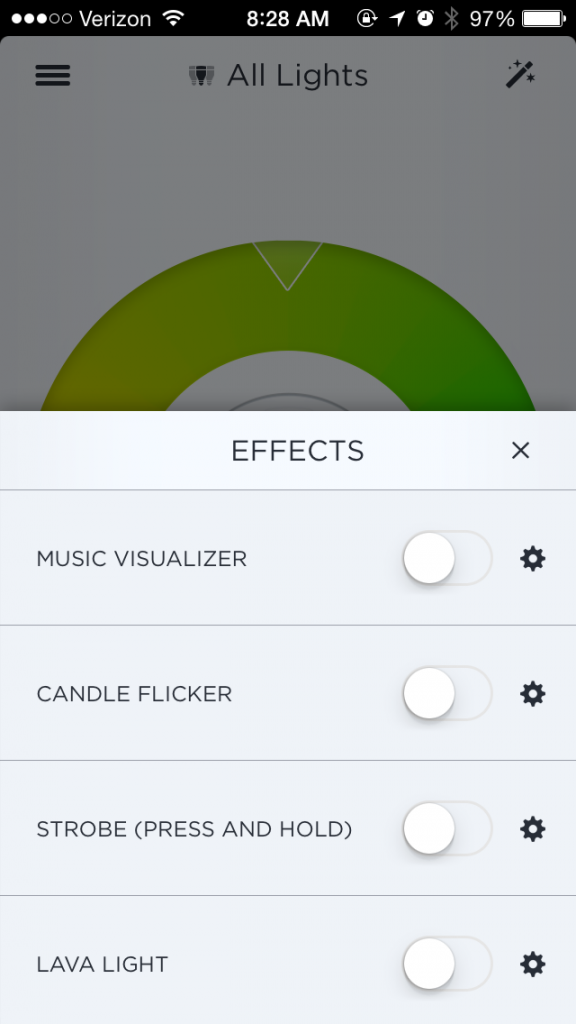
The price of $99 is expensive for a single LED bulb. It is, however, cheaper way to get started than buying a kit with a hub like Hue and some of the other smartbulbs use. LIFX is available in multiple form factors: Edison Screw (what most of Americans think of as a normal light bulb and is also used in many other countries), Bayonet (used in the UK and some other countries), and Downlight (used in many halogen downlight fixtures).
Despite the continued early version issues, I think the LIFX approach is a good one. If the company can fix the software and hardware bugs, I think the product has promise. Given that you can get a single bulb to play with for $100, it is worth checking out. If nothing else, you can have multicolored meetings at work or an orange porch light for Halloween!
Footnote: All photos were taken at a fixed white balance of 5000° K







